A Fire extinguisher is a set of chemical components built to extinguish a fire. Anything can catch fire regardless of metal, organic material, or any chemical substance. Different fire extinguishers and kitchen fire suppression 10 are manufactured. These are used to demolish fires caused by various mediums. These instruments consist of varieties, depending upon the source of the fire. This article will discuss the fire caused while cooking and in the kitchen.
Classes Of Fire Extinguishers
Quick Navigation
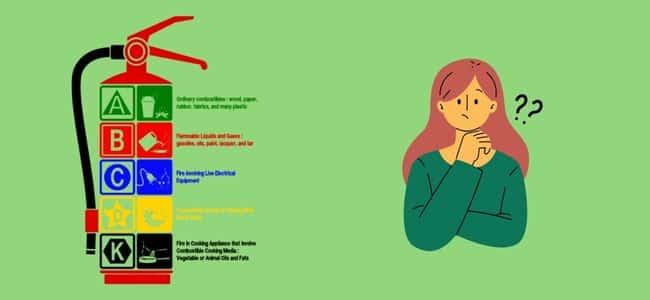
There are 5 classes in which fire extinguishers are divided. Class A, Class B, Class C, Class D, and K. These classes are discussed below:
1. Class A fire extinguisher:
These extinguishers are used for fires fueled by combustible organic materials, for example, cloth, paper, wood, and plastic. These extinguishers consist of water and other basic liquids.
2. Class B fire extinguisher:
Class B fire extinguishers have sub-classes which include Class K fire extinguishers. These extinguishers are used for fires fueled by flammable liquids, like petroleum gases, tars, oil-based solvents and paints, lacquers, alcohol, and flammable gases. They are found in gas stations and chemistry labs.
3. Class C fire extinguisher:
These extinguishers are used for fires caused due to awful wiring, circuit breakage, faulty machinery and electrical appliances, short circuit in switchboards, etc. Class C fire extinguishers are helpful in factories, homes, plants, etc.
4. Class D fire extinguishers:
Class D fires are caused due to combustible metals such as magnesium, potassium, titanium, etc. Since these metals are present in laboratories and industries, you will find Class D fire extinguishers.
5. Class K fire extinguishers:
Class K fire extinguishers are the best equipment to suppress fire. These extinguishers can be termed as a subclass of Class B fire extinguishers. The fire caused due to cooking oil, grease, and this fire extinguisher demolished animal fat. Residential kitchens and commercial kitchens use this type of extinguisher for safety.
Fire extinguishers are available as A-B-C fire extinguishers and B-C fire extinguishers. These extinguishers can suppress both classes of fires. A-B-C fire extinguishers are chosen for garages and warehouses. B-C fire extinguishers are classified as kitchen fire extinguishers.
What Does The Number 10 Mean In a Fire Extinguisher?
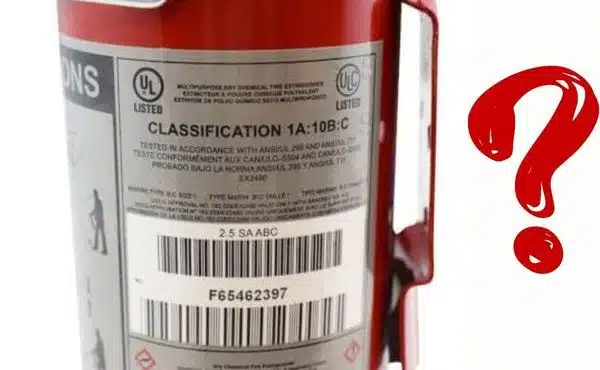
A 10B-C extinguisher can prevent fire from spreading to 10 square feet of Class B or Class C fire. The number before the label’s letter denotes how much a fire extinguishing agent can put out. The number determines the distance an extinguisher can travel to stop the fire.
What Is Ansul R 102 Suppression System?
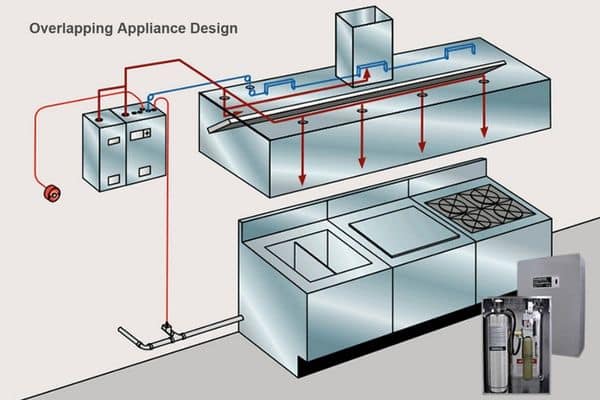
ANSUL R 102 kitchen fire suppression system is manufactured to protect the kitchen and expensive appliances. ANSUL is a brand that designs different types of extinguishers. This system protects the areas, including plenums, nods, filters, and ducts. This system is designed with very advanced technology. This system can detect fire by itself and is controllable through remotes.
Below are some of the features and benefits:
- It knocks downs rapid flames.
- It comes with five years warranty.
- It helps in cooling grease and surroundings.
- It acts as a blanket over the flammable liquid, which prevents it from reignition. You can use an emergency file blanket for this purpose.
Commercial kitchens use these fire suppressors since they are more prone to fire.
What Type Of Fire Extinguisher Should Be Used In The Kitchen?
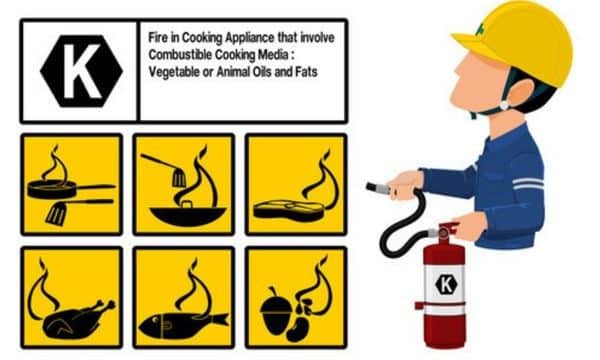
It would help if you had a clear idea about the different varieties of fire extinguishers available on the market. The above reading says that Class K fire extinguishers should be used in the kitchen.
These extinguishers deliver wet chemicals with a high volume and low-level velocity that prevents the liquid and residues from spattering and spreading.
This class of fire extinguishers contains two essential chemicals that prevent fire from spreading – Potassium Literate and Potassium Acetate.
There are two more types of fire extinguishers one is a powder form, and another is CO2. The dry powder fire extinguisher has a blue-colored label, and the CO2 fire suppression has a black label.
These are known as identification marks present on the cylinders. The dry powder fire extinguisher leaves residues after extinguishing the fire.
The residue gets spread all over the kitchen, which makes it dirty. This is a disadvantage because you must leave the kitchen untouched for at least one day.
A CO2 fire extinguisher leaves fewer residues than a dry powder fire extinguisher. Hence, it is less likely for customers. Hence, it is in demand by the customer.
Therefore, whenever you buy a fire extinguisher for your kitchen, don’t get confused! Class K fire extinguishers are termed the best option for kitchens.
What Type Of Fire Extinguisher Is Required In A Commercial Kitchen?
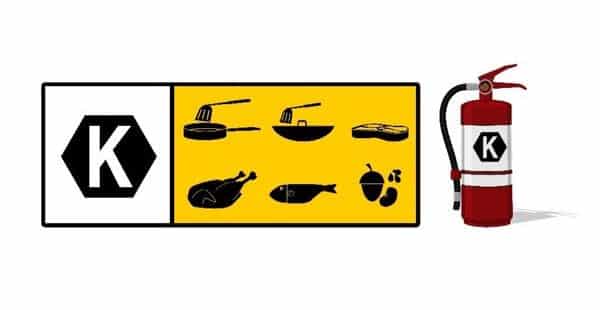
Class K fires are those which are caused due to flammable liquids used in cooking, such as oil, grease, animal fats, etc.
Hence, Class K fire extinguishers are best to use. Remember that Class B fires do not promise to demolish Class K fires. They are ineffective in handling the fires caused due to oils and grease.
Nowadays, commercial kitchens have sprinkler systems that provide safety and security to the property. It is advised that keep A-B-C fire extinguishers in the kitchen along with Class K fire extinguishers.
The reason behind this is that it is a multi-purpose fire suppressor. Second, you don’t need to keep three different types of fire extinguishers.
How Does A Kitchen Fire Suppression System Work?
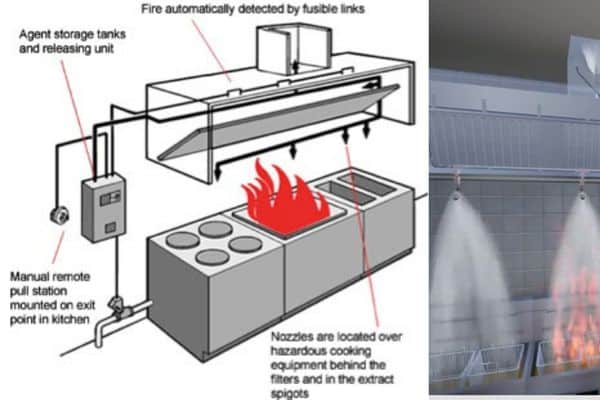
Now the question arises, how do these fire extinguisher cylinders work? It would help if you turned up the nozzle of the cylinder from which a wet chemical is discharged from above the appliance.
This chemical covers the flames and fire-causing elements and hence demolishes the fire. All the fire extinguisher cylinders have the same operation, but they may be slightly different.
If we talk about the operation of the sprinkler system, these are placed on the kitchen’s ceiling. These devices get activated when they come in contact with excessive heat, smoke, and flame. They release water with a force that covers a justified amount of area.
Final Talk
Remember to keep this safety equipment around you whenever working in the kitchen. It would help if you kept it in such a way so that it is within your reach during a fire accident.
You must service the cylinders after use. While purchasing a kitchen fire suppression, remember the fire type you want to prevent.
You can choose an A-B-C fire extinguisher if you need a suppressor for garages. There are many services available online that teach techniques for using an extinguisher.
They also help you with all your doubts and queries. I hope this article helps you with all your doubts. Till then, keep reading!


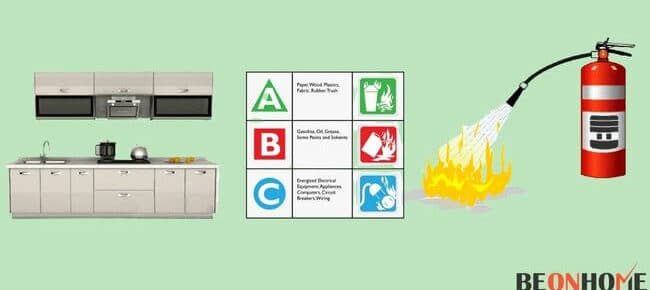
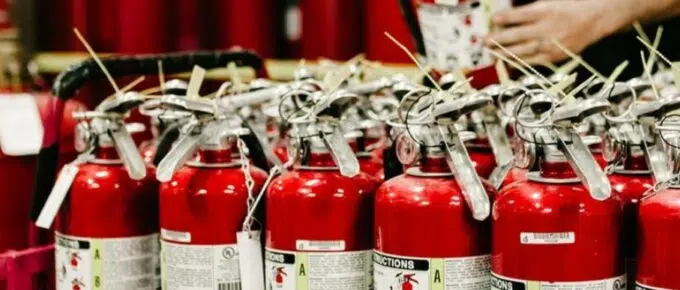
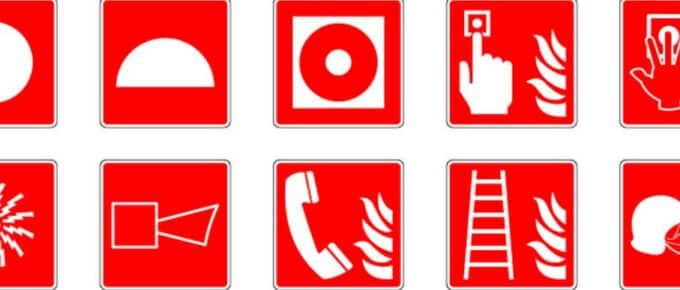
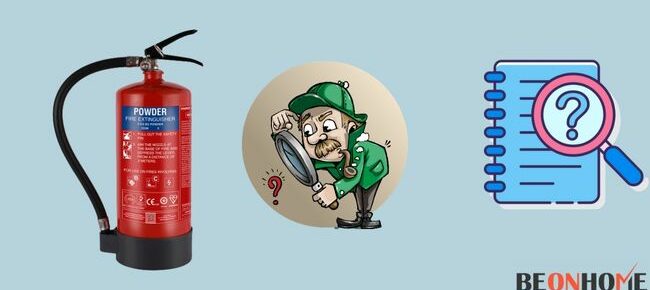
Leave a Reply